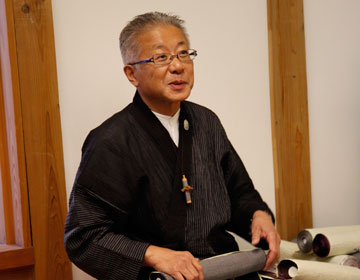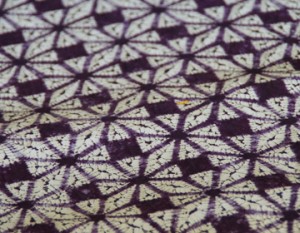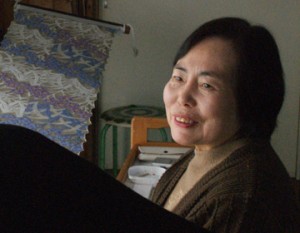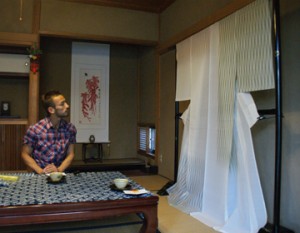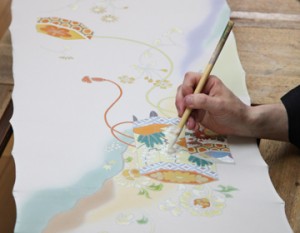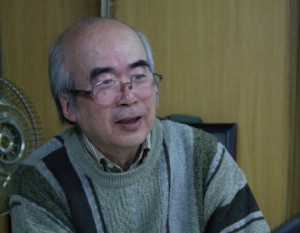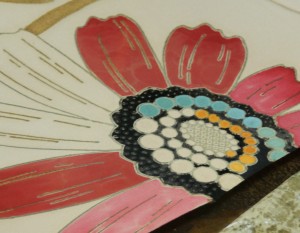Cool hemp “kimono”
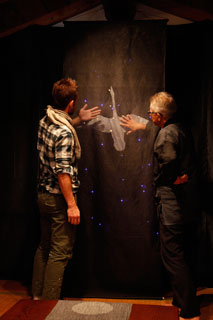
Chijimi-ori utilizes the strong twist of the weft thread as it is woven, then kneaded in warm water to give the fabric crinkles. The “Ojiya-chijimi” is so popular from long ago that when referring to a “kimono” made from crinkled fabric it would automatically mean “Ojiya-chijimi.” “Ojiya-chijimi” masterpieces are usually “kimono” and “yukata” made with hemp thread. They are actually cool to wear as they are cool to the eyes. Why were summer “kimono” produced in an area with such heavy snowfall? Takashi Higuchi’s explained, “Thin hemp thread does well in cool air. The fiber also easily breaks in low humidity. With the snows as much as two to three meters deep in this area, it is as if the whole house is enveloped in a snow dome. The temperature is 0℃ whereas the humidity is 100%. This climate is ideal for making ’kimono’ with hemp.” The ancestors made this discovery as they exerted ingenuity in everyday life of the snowy region. It is a fabric made by the snowy climate. “Yuki-sarashi” is a process in which the fabric is exposed and dried in snow, a common scenery in this region during winter. “Ojiya-chijimi” and “Echigo-jofu” was designated as an Intangible Cultural Heritage by UNESCO in 2009.
Possessing both practicality and elegance.
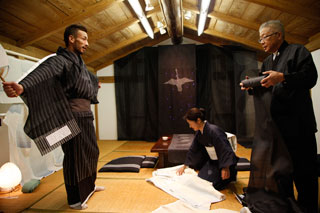
Nakata shows keen interest as he had been searching for summer “yukata” or “kimono.” for himself. He listens as fabric’s features are explained to him as he tries on the “kimono.” They are extremely light, absorbs sweat, and ventilates well. It is an ideal summer-ware. Not only is it practical, the “kimono” made by Higuchi is elegant. There is a graceful beauty in his design such as the moon subtly decorating the cuff of the “kimono.” Nakata murmurs, “This is nice,” as he tries them on. “I can also change the color of the under garment. Not just white but dark grey or light blue to match the color of the ’kimono.’” It was as if he could already see himself in “Ojiya-chijimi.”
Kimono that you can wash
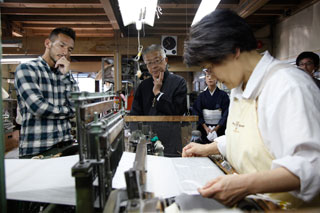
The greatest feature of hemp “kimono” is that you can wash them at home. “You can wash them yourself. Wash it with cold water and it will be dry by morning. It may be wrinkled after you wear them but if you spray water on it, the wrinkles will come out. They said it was the original ’wash-and-wear’ when it was introduced on TV.” Of course you cannot wash silk “kimono” at home, so being able to do this a big advantage. During summer it is cool, comfortable and you can enjoy the texture and the coloring of the material. “Ojiya-chijimi’s” long popularity is based on the climate and wisdom of the people.



